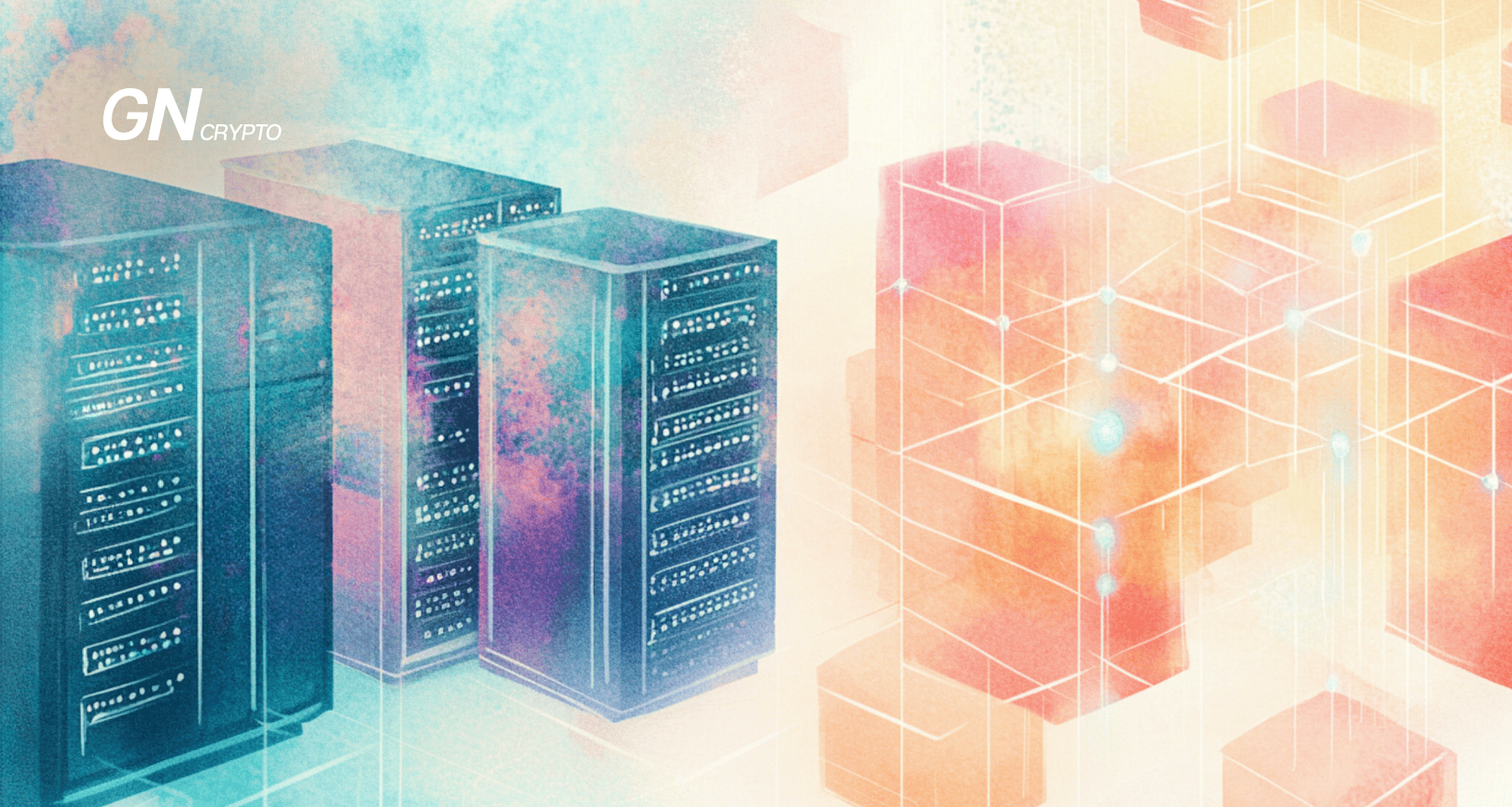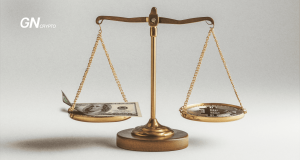Why Blockchain Is Different from Traditional Databases

In the world of business and finance, information is everything. Traditional databases have been reliable tools for decades, but blockchain presents a groundbreaking alternative. What sets it apart, and could it lead to a paradigm shift?
On this page
- Why Blockchain Is Different from Traditional Databases
- How Data is Stored
- Transparency and Data Integrity
- Speed and Scaling Capabilities
- Governance and Oversight
- Maintenance Costs
- Blockchain: Strengths and Weaknesses
- Traditional Databases — Their Advantages and Limitations
- When and Why Blockchain Outshines Traditional Databases
As we navigate a world where information drives progress and decisions, the systems used to store and process that information are critical. Traditional databases have long been trusted tools for organizing, updating, and retrieving data. However, the introduction of blockchain has not only redefined data storage but also reshaped the concept of trust itself.
Why Blockchain Is Different from Traditional Databases
Traditional databases are built on centralized systems. Envision a central server acting as the overseer—it grants permissions, manages updates, and deletes data as needed. This model works well for businesses, as it efficiently handles large-scale data processing and updates.
Yet, centralization is not without flaws. A compromised server—whether due to failure or cyberattacks—can cripple the entire system.
Blockchain’s foundation is decentralization. Picture a shared ledger that is simultaneously replicated and stored by thousands. Each entry is verified collectively via consensus rules, and once recorded, data becomes unchangeable—new information can only be added.
This characteristic makes blockchain indispensable for systems where transparency and integrity are non-negotiable.
How Data is Stored
In traditional databases, data is kept in centralized storage, akin to a massive archive. Access is restricted to administrators or users with specific permissions. While changes are immediate and reflected in real time, this also means that the data can be deleted, edited, or even manipulated.
Blockchain organizes information as a series of interconnected blocks, each containing data and the cryptographic hash of the preceding block. This architecture guarantees data immutability: any attempt to alter the chain would require recalculating all subsequent blocks, a task that demands enormous computational resources and is practically infeasible.
Think of it like a chain of pages in a book, where each page includes a reference to the previous one. If someone tries to edit page 5, the reference on page 6 would break. Fixing it would involve rewriting all the previous pages. Blockchain's cryptographic hashing performs this validation automatically, making manipulation nearly impossible without vast resources.
Illustration of Blockchain Architecture. Source: incrypted.com/
Transparency and Data Integrity
How information is protected sets blockchain apart. In conventional databases, passwords and user permissions provide security, but administrators retain the ability to modify or delete records, which can lead to manipulation or erosion of trust.
Blockchain’s approach is entirely different. Using cryptography, each block of data is secured with a unique digital hash, making every record both immutable and verifiable. Altering a single entry would require rewriting the entire chain on the majority of network nodes—a task so resource-intensive it’s either impossible or financially prohibitive.
This makes blockchain an excellent choice for secure financial transactions, transparent voting systems, and other areas where reliability is crucial.
Speed and Scaling Capabilities
Traditional databases boast exceptional speed and scalability. Centralized architectures allow them to efficiently process millions of transactions per second, particularly when servers are optimized. Technologies like SQL and NoSQL offer versatile scaling options, enabling resource expansion either vertically (adding server capacity) or horizontally (distributing loads across multiple servers).
Blockchain, on the other hand, operates with inherent limitations. Its decentralized nature means that every node in the network must validate each block, resulting in significantly slower transaction speeds. For example, Bitcoin handles about 7 transactions per second, and Ethereum processes up to 17—substantially slower than traditional systems.

Transaction Speed Comparison: Bitcoin and Ethereum — transactions per second in their respective networks. Source: chainspect.app/
Scalability is a persistent issue for blockchain. The more active users and transactions a network hosts, the greater the data it must store and process. Nevertheless, breakthroughs like sharding, Layer 2 networks, and new consensus models are steadily improving blockchain’s capacity to handle growth efficiently.
Traditional databases dominate in processing speed, but blockchain offers the trade-off of slower performance for the benefits of decentralized trust and unparalleled data integrity.
Governance and Oversight
Traditional databases are governed by system administrators who set access permissions, update records, and manage security. While efficient, this centralized control presents a risk: a single point of failure, such as human error or external interference, can jeopardize the entire system.
Blockchain, by contrast, distributes control across all participants. Each user holds an identical copy of the ledger and can verify its accuracy independently. This decentralized approach eliminates reliance on a central authority, instead placing trust in consensus algorithms that validate each transaction.
A centralized architecture (left) depends on a single authority, while a decentralized model (right), like blockchain, distributes control equally across the network. Source: it-osvita.diia.gov.ua/
Maintenance Costs
The cost of operating traditional databases versus blockchain systems varies significantly due to differences in their architecture and functionality.
Traditional database maintenance involves:
- Centralized infrastructure: Costs associated with server upkeep, software updates, physical security, and data backups.
- Human resources: Employing database administrators and technical experts to configure and oversee the system.
- Security measures: Investment in tools such as antivirus programs, firewalls, and advanced protection mechanisms to prevent cyber threats.
Traditional databases are cost-efficient for smaller projects but can demand significant expenditure for large-scale deployments requiring high reliability and security.
Maintenance Operations at Volia Cable Data Center, Kyiv, 2018. Source: vector-vs.com/reference/view/data-centr-volja-kabel
The cost structure of blockchain maintenance diverges from traditional systems:
- Decentralization and network distribution: Data is stored across decentralized nodes supported by participants, which decreases reliance on centralized infrastructure but results in higher energy consumption, particularly for PoW-based systems.
- Consensus algorithm expenses: Methods like Proof-of-Work require significant energy and computing resources. Bitcoin’s mining process illustrates these high costs, from electricity to advanced hardware.
- Efficiency through smart contracts: Blockchain’s reliance on smart contracts lowers administrative costs by reducing intermediaries and automating processes, leading to significant savings in the long run.
Short-term costs favor traditional databases, which are generally less expensive but incur significant expenditures on security measures, personnel, and equipment as systems grow. Blockchain, though costlier initially—especially in terms of energy and computing resources—delivers transparency, minimizes intermediary expenses, and optimizes long-term costs.
The decision between traditional databases and blockchain should be guided by the project’s scale, its security and trust requirements, and the financial means to sustain the chosen approach.
Blockchain: Strengths and Weaknesses
Blockchain delivers unparalleled transparency, trustworthiness, and cryptographic security by eliminating intermediaries and maintaining immutable records. Its decentralized system ensures data integrity, as any modifications require the consensus of most network participants, making unauthorized changes highly improbable.
Nevertheless, blockchain technology is not without its challenges. It is often criticized for slow transaction speeds, energy inefficiency—especially under Proof-of-Work—and the complexities of implementation. Businesses integrating blockchain must navigate steep costs and extended timelines to fully adapt the technology.
Traditional Databases — Their Advantages and Limitations
Standard databases are celebrated for their ability to process vast amounts of data with speed and flexibility. Their straightforward integration with existing systems and scalability make them an essential tool for managing complex data operations.
However, centralized management introduces vulnerabilities. System failures or cyberattacks can have serious repercussions for data security. Moreover, maintaining a centralized system demands significant investment in infrastructure, security measures, and operational resilience.
When and Why Blockchain Outshines Traditional Databases
Blockchain technology shines in areas requiring heightened security, transparency, and efficiency, setting itself apart from conventional database systems.
Finance: Cryptocurrencies powered by blockchain eliminate the need for intermediaries like banks, reducing transaction costs and enabling faster payments worldwide. Its secure infrastructure safeguards financial data, making it invaluable for sensitive operations.
Logistics: Blockchain improves supply chain transparency by enabling real-time tracking of goods. It ensures an accurate record of product origins and movements, reducing risks of fraud, loss, and inefficiencies in inventory management.
Voting: By leveraging blockchain’s immutability and transparency, voting systems can achieve unparalleled security. Unlike centralized databases, which are vulnerable to fraud and hacking, blockchain ensures every vote is securely recorded and cannot be altered post-submission. This innovation significantly minimizes the risk of tampering in elections.
Explore further: How to implement elections on blockchain?
Healthcare: The application of blockchain in healthcare enables secure and seamless data storage and sharing. Patients and healthcare professionals gain protected access to critical records, such as medical histories and diagnostic results. Blockchain’s decentralized and cryptographic design guarantees confidentiality while safeguarding against unauthorized changes or data abuse.
Pharmaceutical data tracking with blockchain integration. Source: https://www.farmatrust.com/copy-of-pharmaceutical-tracking-dat
Read on: Blockchain in healthcare
Blockchain and traditional databases cater to distinct objectives. Databases are fast, adaptable, and efficient for centralized information handling. Blockchain, by contrast, delivers exceptional transparency, immutable records, and decentralized trust.
Is blockchain poised to replace traditional databases? Probably not. But it is carving out a space in domains where security, transparency, and resistance to tampering are non-negotiable. In a world embracing digital transformation, blockchain and traditional databases can coexist, playing complementary roles when and where they’re needed.
The content on The Coinomist is for informational purposes only and should not be interpreted as financial advice. While we strive to provide accurate and up-to-date information, we do not guarantee the accuracy, completeness, or reliability of any content. Neither we accept liability for any errors or omissions in the information provided or for any financial losses incurred as a result of relying on this information. Actions based on this content are at your own risk. Always do your own research and consult a professional. See our Terms, Privacy Policy, and Disclaimers for more details.






























